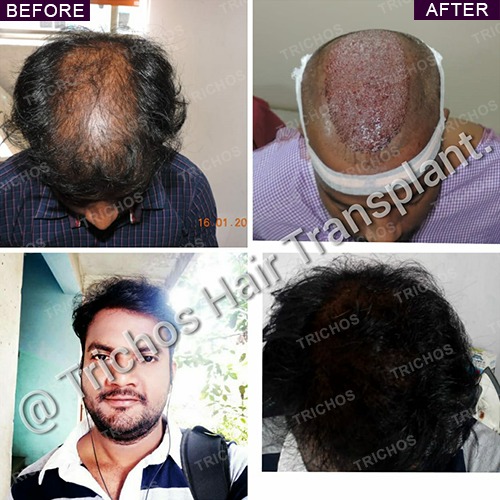Can I use Minoxidil in combination with Clobetasol propionate for hair growth?
Different questions are being raised by fans and followers of Dr John Watts are flooding his series of hugely popular educational videos with queries related to hair transplants and hair growth issues.
In this educational video, noted dermatologist & trichologist and one of the Best Hair Transplant Surgeons in Hyderabad Dr John Watts answers select shortlisted questions of viewers related to hair growth, hair hall and hair transplant.
Anonymous asks: “Can I use Minoxidil in combination with Clobetasol propionate for hair growth?”
In his response, Dr John Watts termed it a dangerous experiment as Clobetasol propionate is a steroid that has the potential to bring adverse consequences.
“There would be temporary hair growth but it will come at a severe cost,” explained Dr John, while advising the viewers to shun the use of steroids for hair growth.
The likely side-effects could be severe skin damage, lowering of immunity levels in the affected region, formation of pustules and glaucoma.
T Srinivas Rao asks: “Can I use hair building fibre three months after hair transplant?”
In his response, Dr John Watts said that the use of hair building fibre is okay if one waits at least 25-30 days after a hair transplant.
“Yes, you can use it after three months as after 25-30 days, the stem cells of the hair grafts take root and start growing and they won’t be affected if hair building fibre is used,” he said.
Dhanraj Goud Dhanu asks: “I underwent a hair transplant procedure on the front but after six months I noticed baldness at the centre/crown region. My donor region too has a hair thinning problem now. What should I do now?”
In his response, Dr John Watts said that it is a common situation facing many hair transplant patients if they do not follow the proper protocol or enough steps are not taken to save the existing hair. There are other reasons too for this problem.
“If one is predisposed to genetic baldness and does not take proper medication to save existing hair on the scalp on the crown region, such a scenario is not ruled out for many hair transplant patients,” said Dr John Watts.
In this case, since the patient has run out of donor hair for a second hair transplant, Dr John advised the use of body hair transplant where hair grafts from the beard, upper abdomen or upper back are used as hair grafts for transplant.
K Raju asks: “I am a diabetic. Can I undergo a hair transplant? Will it be safe? Will it affect results?”
In his response, Dr John Watts said that diabetic patients can also undergo hair transplant procedures provided they follow the proper protocol. “The first precondition is to keep your blood sugar level under control by following proper diet and medicines,” said Dr John.
However, there is a catch as even after following all the safety protocols, diabetic patients undergoing hair transplant procedures may witness 10-15% less results when compared with normal people.
Trichos provides state-of-the-art treatment for various hair loss conditions and offers advanced hair transplant solutions. Call us Today for a Life-Changing Experience.
Book an appointment for expert guidance


About
Causes
Alopecia
Restoration
Procedures
Locations
Disclaimer: While hair transplants are generally safe and effective, as with any medical procedure, there can be minimal and temporary side effects based on specific or underlying medical condition of the individual patient. Please consult in person with our qualified medical team at Trichos for a thorough assessment of your specific condition and individualized guidance on the potential risks and benefits associated with our hair restoration treatments.
Learn more about Medical Consent for Surgeries.



